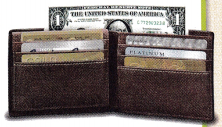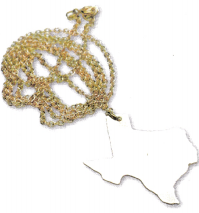Refer to our Texas Go Math Grade 8 Answer Key Pdf to score good marks in the exams. Test yourself by practicing the problems from Texas Go Math Grade 8 Lesson 16.3 Answer Key Analyzing Financial Situations.
Texas Go Math Grade 8 Lesson 16.3 Answer Key Analyzing Financial Situations
Texas Go Math Grade 8 Lesson 16.3 Explore Activity Answer Key
Exploring Different Payment Methods
There are several ways to pay for goods and services. These payment methods include cash, stored-value cards, debit cards, credit cards, money orders, and checks.

Research the similarities and differences between stored-value cards, also known as prepaid cards, debit cards, and credit cards.
A. Use an Internet search engine to find images of the three types of cards. How are they similar and different in appearance?
Answer: They are plastic, rectangular cards. Debit cards and credit cards look similar. Prepaid cards often come in different colors and style.
B. What information is on each card?
Stored-value card: ______________
Stored-value card: ______________
Debit card: ______________
Credit card: ______________
Answer:
Stored-value card: Account number, name of bank, store name
Debit card: Account number, name and expiry date
Credit card: Account number, name and expiry date, photo
C. When you use a stored-value card, debit card, or credit card, the money you spend is coming from different places. From where is the money deducted when you use each card?
Answer:
stored-value card: A fixed amount is put on the card at the time of purchase. The amount on the card goes down with each purpose.
Debit: The money is automatically taken out of your account.
Credit: The credit card is paid by the company, and you agree to pay the amount at a future date.
D. Do you need to have an account at a bank to have each type of card?
Answer: You need a bank account to have a debit card and you often get a credit card through a bank. Prepaid cards can be purchased with cash.
E. Research the fees associated with each type of card, such as activation fees, ATM fees, annual fees, and late payment fees. Describe the possible fees associated with each type of payment method.
Stored-value card ______________
Debit card ______________
Credit card ______________
Answer:
Stored-value card ATM fee for using the card to get cash at ATMs, inactivity fee, activation fee
Debit card ATM fee, overdraft fee if the card is used and there isn’t enough money in your account
Credit card Annual fee, ATM fee, late payment fee, interest charges
Reflect
Question 1.
What are the advantages and disadvantages of using a credit card?
Answer:
Advantages: credit cards are widely accepted, you can buy things before you have saved for them.
Disadvantages: more charges and fees than with debit cards and stored-value cards, you can spend money you do not have, so it is easier to go into debt.
Question 2.
What are the advantages and disadvantages of using a debit card?
Answer:
Advantages: You don’t have to carry cash, or safety, because only you know your pin number.
Disadvantages: You need enough money in your account to cover the entire cost of things or you might overdraw your account.
Identify the payment method used in each transaction as a stored-value card, a debit card, or a credit card.
Question 3.
Stan buys a television and pays for it over the next 3 months.
Answer: Credit card
Question 4.
Ingra buys a cup of coffee, and the money is immediately withdrawn from her bank account.
Answer: Debit card
Question 5.
Yun used a $20 bus pass to ride the bus.
Answer: Stored-value card
Reflect
Question 6.
Don has been saving to buy a used truck for his lawn care business. He has $5,200 in his business savings account. The truck he wants costs $6000, and there is a possibility of financing at an interest rate of 7.5%. What financial advice would you give Don?
Answer:
Don should consider how much additional money the purchase of the truck will bring in for his business. He should also consider how much he should pay upfront to reduce interest interest payments.
Your Turn
Tom has $524 in savings. His car needs new tires. Tom bought new racing tires for his car for $1400 with his credit card.
Question 7.
Was Tom’s decision financially responsible or financially irresponsible? Explain your answer.
Answer: Irresponsible because he does not have enough money, must pay high interest and does not need the tires.
Question 8.
What could Tom have done differently?
Answer: Tom could have purchased more reasonably priced tires.
Texas Go Math Grade 8 Lesson 16.3 Guided Practice Answer Key
Identify the payment method used in each transaction as cash, a credit card, a debit card, or a stored-value card. (Explore Activity)

Question 1.
Trina received a gift card to an electronics store and used it to buy a video game.
Answer: The payment method is a stored-value card
Question 2.
Sue gives $5 to a street vendor for a necklace.
Answer: The mode of payment is cash.
Question 3.
Steve uses a card and types in his PIN so that his purchase will be withdrawn from his checking account.
Answer: The method of payment is a debit card
Determine if the decisions described are financially responsible or financially irresponsible. Explain your answers. (Example 1)
Question 4.
John was just laid off from his job. He has $750 in savings. To make himself feel better, he buys a new bike for $650 with his credit card.
Answer: Irresponsible
John does not have a steady source of income and could have purchased a cheaper bike.
Question 5.
Maria and Pat are recently married and work for the same company. They each pay $45 per month for health insurance. Pat combined their insurance for a new rate of $74 per month.
Answer: Responsible
Given,
Maria and Pat are recently married and work for the same company.
They each pay $45 per month for health insurance.
Pat combined their insurance for a new rate of $74 per month.
The new rate will save them $16 per months
45 × 2 – 74
90 – 74 = 16
Essential Question Check-In
Question 6.
What are the characteristics of financially responsible decisions?
Answer: They enable long-term goals, avoid burdensome debt maximize value, and increase flexibility for the future.
Texas Go Math Grade 8 Lesson 16.3 Independent Practice Answer Key
Research the similarities and differences of checks and money orders. Then answer 7-10.
Question 7.
What is a check? What is a money order?
Answer:
A cheque is a bill of exchange in which one party orders the bank to transfer the money to the bank account of another party.
Money order: A money order is a mode of paying for something with cash using a check from a third party.
Question 8.
When someone writes a check, where is the money coming from?
Answer: The money comes from a savings account. The person writes the check according to the cash deposited in the bank.
Question 9.
When someone pays with a money order, where is the money coming from?
Answer: The money comes from a savings account or from another party’s account.
Question 10.
Do you think it is more secure to have someone pay you with a check or a money order? Explain.
Answer: There are security benefits to paying through check compared to the money order. Money orders are beneficial for people who don’t have a checking account or do not want to accept personal checks.
Question 11.
Matt is saving for a new computer. Matt’s uncle offers to pay him $15 an hour to clean out his garage. Matt decides to go play soccer with his friends instead. Do you think Matt made the right decision? Why or why not?
Answer: No, because it helps him to buy a new computer if go for cleaning out his garage. So, I think Matt made the wrong decision.
Question 12.
Amy owns her own business as a landscaper of homes and office buildings. On average, maintaining a homeowner’s yard takes 2 hours per month, and Amy is paid $300 per month. The office buildings require 35 hours of landscaping per month and pay $2800 monthly. Which type of client do you think Amy prefers? Explain your answer.
Answer:
Given,
Amy owns her own business as a landscaper of homes and office buildings.
On average, maintaining a homeowner’s yard takes 2 hours per month, and Amy is paid $300 per month.
The office buildings require 35 hours of landscaping per month and pay $2800 monthly.
Amy prefers the office building client.
H.O.T. Focus on Higher Order Thinking
Question 13.
Analyze Relationships Fred and Wilma are buying a house. They have enough money in savings to pay for it directly. However, they have an opportunity to get a loan for the total price of the house at a 3% annual interest rate. They believe they could put their savings into investments that earn 5% annual interest. How should Fred and Wilma pay for their house? Explain.
Answer:
Question 14.
Critical Thinking Nikola has received two job offers. The first is for an online company that pays $20 per hour. The work is interesting and lets him work from home, allowing him to spend more time with his kids. The second offer is at a factory an hour away. It is hard and repetitive work that pays $25 per hour. Which job should Nikola take? What factors should he consider besides the hourly pay in making his decision?
Answer:
I get how Nikolai is working at home and will be getting paid $20 but despite the $25 being at a factory and is repetitive, here is a little word from experience.
The $25 is a start-off which is pretty good and it won’t always be at a factory.
If Nikolai is working hard and repetitive, he will be promoted to the fact that he will be paid more and work at home time-to-time.
The $20 one, however, is a work-at-home type and since there are children, the house will have to be quiet during calls and what-not.
Question 15.
Critique Reasoning Elena has learned to analyze whether decisions are financially responsible or not. For all of her future decisions, she plans to choose the option that is most financially responsible. Do you think this is a good idea? Explain.
Answer: Yes Elena’s thought is a good idea